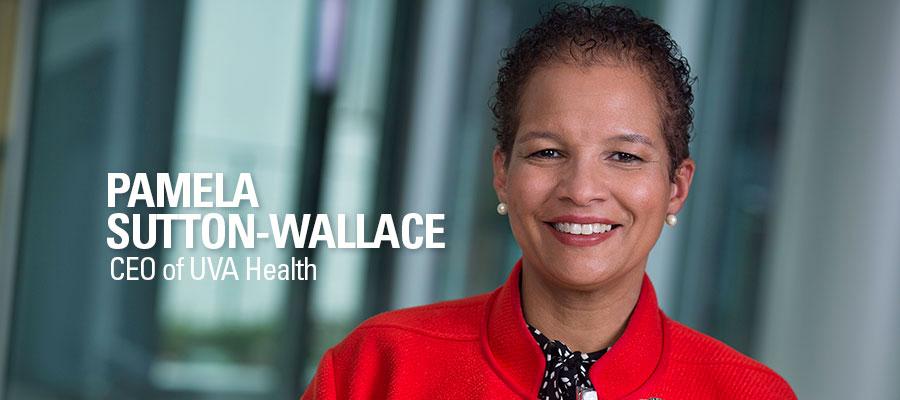UVA Health evolves to create a more innovative culture

UVA Health based in Charlottesville, Va., aims to provide the best and safest care and service, informed by its clinical discoveries and in the healthiest work environment, while training the workforce of the future and driving value.
“As we think about innovation, we have to think about how we meet those goals in new and novel ways,” says CEO Pamela Sutton-Wallace.
Health care innovation is much more than implementing new technologies, she says, it’s changing approaches and processes to become more adaptable, nimble and efficient while optimizing the organization’s most valuable resource — its expert workforce.
“We want to ensure that they have an environment where our team members and physicians can deliver the highest level of care and service to our patients,” she said. “We also want to be able to translate groundbreaking research into clinical care innovation, meeting the needs of the entire community.”
Engaging clinicians to achieve wellbeing and resiliency
The UVA Health team constantly thinks about clinician wellbeing and keeping physicians engaged. “I think this is top of mind for any senior leader in the health care space,” Sutton-Wallace says.
“As we think about innovation and redefining systems and processes, it is critical to engage the workforce in the problem-solving, planning and implementation of solutions including the introduction of new technology; otherwise, we risk creating a system of more workarounds.”
UVA Health leaders understand that implementation cannot come from the top down, but must come from the frontline staff, faculty and physicians who engage in the work every day.
“To increase the level of engagement, UVA physicians serve in critical leadership roles such as director of community health and wellbeing, chief of quality and performance improvement and chief of ambulatory strategy/operations; and they are often paired with administrative and nursing colleagues, where they are part of strategy development and operational implementation,” Sutton-Wallace says.
Reaching beyond the four walls to bring care to the community
The health system also is developing community partnerships to address social determinants of health and expanded its ambulatory network to bring primary and specialty care closer to where patients and their loved ones live, work and play.
“We need to be intentional and active partners with community organizations that address societal issues like food insecurity, homelessness or home-based support services,” Sutton-Wallace says. “We know that clinical care alone will not ensure health and well-being; it takes an incredible amount of partnership to improve the health outcomes of a community.”
Investing in tools such as telehealth and digital strategies also will help give patients and families ready access, especially to specialty care, she adds.
Unique partnerships highlight mutual benefits, positive outcomes
Hospitals and health systems looking to innovate and spur creativity may have energy and potential but lack funding to move forward on ideas, Sutton-Wallace says. She recommends partnering with industries such as information technology or data analytics who “may already do this well, but yet don’t have the health care expertise.”
For example, both Amazon and Google are engaging and hiring people who have worked in the health care space to understand workflows and processes and where technology can create new and innovative pathways to care, she notes.
UVA Health has partnered with others to develop new care models that enable us to put care in patient’s homes. For example, she says UVA Health neonatologists are using telehealth solutions using iPads in the homes of premature infants to support parents in caring for their babies at home in lieu of an extended hospitalization.
“Further, as an academic medical center, we have access to some of the world’s best health care thinkers and researchers, and together we are also investing in new companies that show great promise in offering innovative solutions to classic health care problems,” Sutton-Wallace says. “Funding such innovation allows us to take early bets on what systems and technologies can be really viable in changing how we deliver care.”

